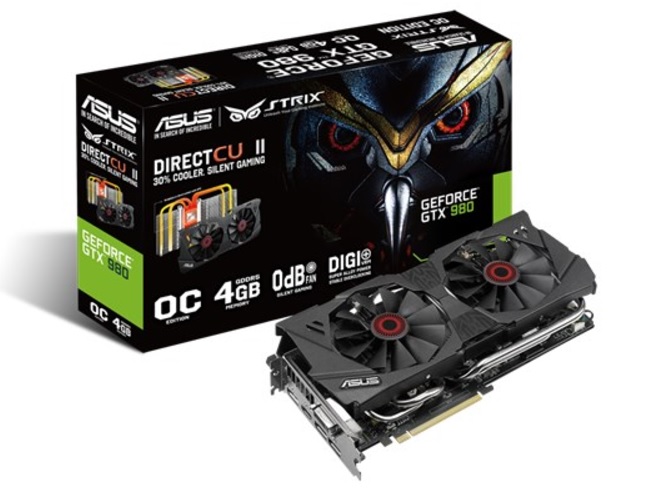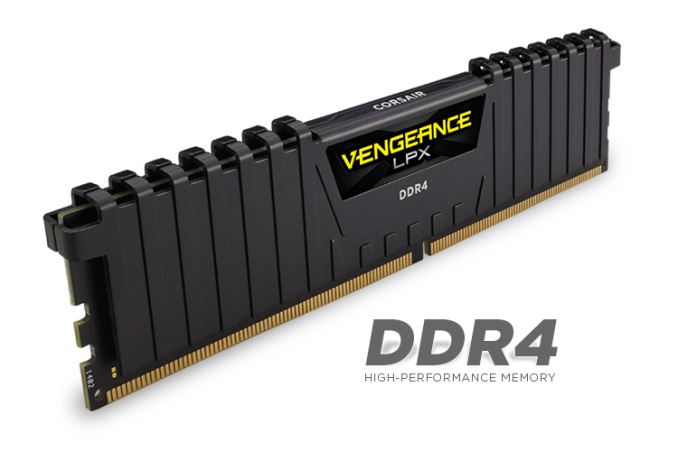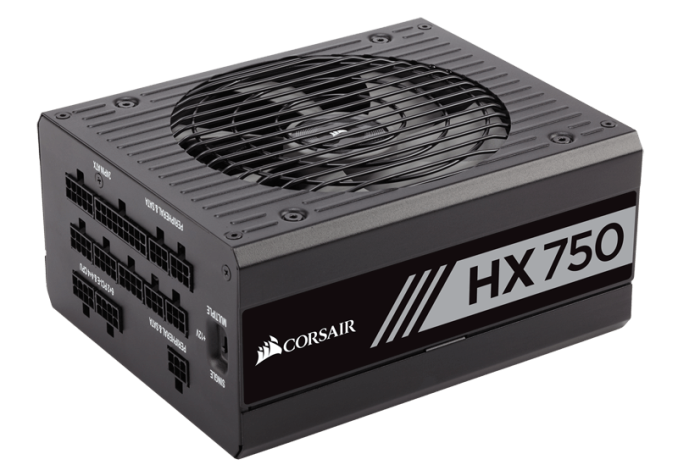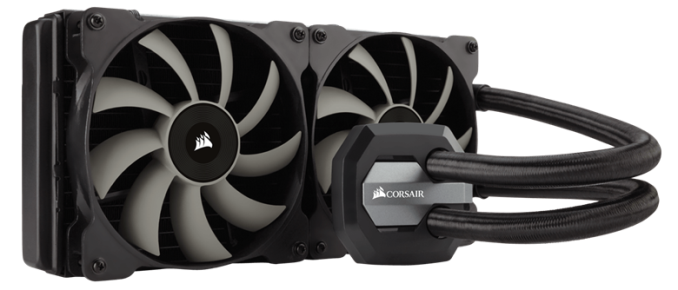The MSI X299M Gaming Pro Carbon AC Motherboard Review
by Joe Shields on March 22, 2018 9:00 AM EST- Posted in
- Motherboards
- MSI
- MicroATX
- X299
- Basin Falls
- Skylake-X
- Gaming Pro Carbon
Board Features
The MSI X299M Gaming Pro Carbon AC packs most the features found on full sized boards into a microATX sized package.
| MSI X299M Gaming Pro Carbon AC | |
| Warranty Period | 3 Years |
| Product Page | Link |
| Price | $290 (Amazon) |
| Size | MicroATX |
| CPU Interface | LGA2066 (Skylake-X CPUs Only) |
| Chipset | Intel X299 |
| Memory Slots (DDR4) | Four DDR4 Quad Channel Supporting 64GB Up to DDR4 4200 |
| Network Connectivity / Wi-Fi | 1 x Intel I219-V GbE 1 x Intel I211AT Intel 8265 - Wi-Fi 802.11ac Dual band 2.4/5G Ghz to 867 Mbps Bluetooth 4.2 |
| Onboard Audio | Realtek ALC1220 |
| PCIe Slots for Graphics (from CPU) | 3 x PCIe 3.0 - 44 Lane CPU: x16/x16/x8 - 28 Lane CPU: x16/x8/x4 |
| PCIe Slots for Other (from PCH) | None |
| Onboard SATA | 8 x RAID 0/1/5/10 |
| Onboard SATA Express | None |
| Onboard M.2 | 2 x PCIe 3.0 x4 and SATA modes |
| Onboard U.2 | None |
| USB 3.1 | ASMedia ASM3142 1 x Type-A (Back Panel) 1 x Type-C (Back Panel) 1 x Internal Header |
| USB 3.0 | Chipset 4 x Back Panel 1 x Internal Header |
| USB 2.0 | Chipset 2 x Back Panel 2 x Internal Headers |
| Power Connectors | 1 x 24-pin ATX 1 x 8-pin CPU 1 x 6-pin PCIe (optional for multi-GPUs) |
| Fan Headers | 1 x 4-pin CPU 1 x 4-pin Water Pump 3 x 4-pin System Fans |
| IO Panel | 1 x Clear CMOS 2 x BIOS Flashback+ button 1 x PS/2 Keyboard/mouse combo port 2 x USB 2.0 ports 2 x Wi-Fi Antenna connectors 4 x USB 3.1 (5 Gbps) ports 2 x LAN (RJ45) ports 1 x USB 3.1 (10 Gbps) Type-A port 1 x USB 3.1 (10 Gbps) Type-C port 1 x Optical S/PDIF OUT connector 5 x OFC audio jacks |
Test Bed
As per our testing policy, we take a high-end CPU suitable for the motherboard that was released during the socket’s initial launch and equip the system with a suitable amount of memory running at the processor maximum supported frequency. This is also typically run at JEDEC sub timings where possible. It is noted that some users are not keen on this policy, stating that sometimes the maximum supported frequency is quite low, or faster memory is available at a similar price, or that the JEDEC speeds can be prohibitive for performance. While these comments make sense, ultimately very few users apply memory profiles (either XMP or other) as they require interaction with the BIOS, and most users will fall back on JEDEC supported speeds - this includes home users as well as industry who might want to shave off a cent or two from the cost or stay within the margins set by the manufacturer. Where possible, we will extend our testing to include faster memory modules either at the same time as the review or a later date.
Readers of our motherboard review section will have noted the trend in modern motherboards to implement a form of MultiCore Enhancement / Acceleration / Turbo (read our report here) on their motherboards. This does several things, including better benchmark results at stock settings (not entirely needed if overclocking is an end-user goal) at the expense of heat and temperature. It also gives, in essence, an automatic overclock which may be against what the user wants. Our testing methodology is ‘out-of-the-box’, with the latest public BIOS installed and XMP enabled, and thus subject to the whims of this feature. It is ultimately up to the motherboard manufacturer to take this risk – and manufacturers taking risks in the setup is something they do on every product (think C-state settings, USB priority, DPC Latency/monitoring priority, overriding memory sub-timings at JEDEC). Processor speed change is part of that risk, and ultimately if no overclocking is planned, some motherboards will affect how fast that shiny new processor goes and can be an important factor in the system build.
| Test Setup | |
| Processor | Intel i9 7900X (10C/20T, 3.3G, 140W) |
| Motherboard | MSI X299M Gaming Pro Carbon AC (BIOS 1.40) |
| Cooling | Corsair H115i |
| Power Supply | Corsair HX750 |
| Memory | Corsair Vengeance LPX 4x8GB DDR4 2666 CL16 Corsair Vengeance 4x4GB DDR4 3200 CL16 |
| Memory Settings | DDR4 2666 CL16-18-18-35 2T |
| Video Cards | ASUS Strix GTX 980 |
| Hard Drive | Crucial MX300 1TB |
| Optical Drive | TSST TS-H653G |
| Case | Open Test Bed |
| Operating System | Windows 10 Pro 64-bit |
In our testing we have had to swap CPUs to a new 7900X - while this switch will not affect the majority of results, it will have an effect on our power testing and overclocking. The stock voltage will be different as will the voltage needed to overclock. Because of this, the power testing and Overclocking results are not directly comparable. They are noted by an asterisk in the results.
Many thanks to...
We must thank the following companies for kindly providing hardware for our multiple test beds. Some of this hardware is not in this testbed specifically but is used in other testing.
Thank you to ASUS for providing us with GTX 980 Strix GPUs. At the time of release, the STRIX brand from ASUS was aimed at silent running, or to use the marketing term: '0dB Silent Gaming'. This enables the card to disable the fans when the GPU is dealing with low loads well within temperature specifications. These cards equip the GTX 980 silicon with ASUS' Direct CU II cooler and 10-phase digital VRMs, aimed at high-efficiency conversion. Along with the card, ASUS bundles GPU Tweak software for overclocking and streaming assistance.
The GTX 980 uses NVIDIA's GM204 silicon die, built upon their Maxwell architecture. This die is 5.2 billion transistors for a die size of 298 mm2, built on TMSC's 28nm process. A GTX 980 uses the full GM204 core, with 2048 CUDA Cores and 64 ROPs with a 256-bit memory bus to GDDR5. The official power rating for the GTX 980 is 165W.
The ASUS GTX 980 Strix 4GB (or the full name of STRIX-GTX980-DC2OC-4GD5) runs a reasonable overclock over a reference GTX 980 card, with frequencies in the range of 1178-1279 MHz. The memory runs at stock, in this case, 7010 MHz. Video outputs include three DisplayPort connectors, one HDMI 2.0 connector, and a DVI-I.
Further Reading: AnandTech's NVIDIA GTX 980 Review
Thank you to Crucial for providing us with MX300 SSDs. Crucial stepped up to the plate as our benchmark list grows larger with newer benchmarks and titles, and the 1TB MX300 units are strong performers. Based on Marvell's 88SS1074 controller and using Micron's 384Gbit 32-layer 3D TLC NAND, these are 7mm high, 2.5-inch drives rated for 92K random read IOPS and 530/510 MB/s sequential read and write speeds.
The 1TB models we are using here support TCG Opal 2.0 and IEEE-1667 (eDrive) encryption and have a 360TB rated endurance with a three-year warranty.
Further Reading: AnandTech's Crucial MX300 (750 GB) Review
Thank you to Corsair for providing us with Vengeance LPX DDR4 Memory, HX750 Power Supply, and H115i CPU Cooler.
Corsair kindly sent a 4x8GB DDR4 2666 set of their Vengeance LPX low profile, high-performance memory for our stock testing. The heatsink is made of pure aluminum to help remove heat from the sticks and has an eight-layer PCB. The heatsink is a low profile design to help fit in spaces where there may not be room for a tall heat spreader; think a SFF case or using a large heatsink. Timings on this specific set come in at 16-18-18-35. The Vengeance LPX line supports XMP 2.0 profiles for easily setting the speed and timings. It also comes with a limited lifetime warranty.
Powering the test system is Corsair's HX750 Power Supply. This HX750 is a dual mode unit able to switch from a single 12V rail (62.5A/750W) to a five rail CPU (40A max ea.) and is also fully modular. It has a typical selection of connectors, including dual EPS 4+4 pin four PCIe connectors and a whopping 16 SATA power leads, as well as four 4-pin Molex connectors.
The 135mm fluid dynamic bearing fan remains off until it is 40% loaded offering complete silence in light workloads. The HX750 comes with a ten-year warranty.
In order to cool these high-TDP HEDT CPUs, Corsair sent over its latest and largest AIO in the H115i. This closed-loop system uses a 280mm radiator with 2x140mm SP140L PWM controlled fans. The pump/block combination mounts to all modern CPU sockets. Users are also able to integrate this cooler into the Corsair link software via USB for more control and options.















14 Comments
View All Comments
eek2121 - Thursday, March 22, 2018 - link
You guys should pay closer attention to the quality of MSI motherboards. Especially how buggy their UEFI/BIOS is. For instance, 6 BIOS releases in a row on my x399 had bugs like overclocking values not saving unless you hit enter, broken fan profiles that didn't work, etc.halcyon - Friday, March 23, 2018 - link
Agreed. Have a Z370 MSi board and the UEFI/BIOS is a far cry from Asus or Asrock...Joe Shields - Tuesday, March 27, 2018 - link
I can only report on what I tested and my experiences in testing them. I did not experience any of those issues in my testing time.hansmuff - Thursday, March 22, 2018 - link
Thank you for pointing out the terrible heatsink. In this price class, IMHO that makes it a no-go.gammaray - Thursday, March 22, 2018 - link
is there a point in buying that platform when the 8700k is king of gaming?mkaibear - Friday, March 23, 2018 - link
There are plenty of points in buying that platform. It makes for excellent workstations, the added parallelism over an 8700K makes it worthwhile if you're doing anything reasonably threaded but requiring decent single-core performance as well.Of course Threadripper has taken a chunk of the workstation space higher up, so there's less of a point than there was when it was launched, but not everyone only does gaming on their system.
(also if you are using a system for content creation or compiling at home, and you need a large number of cores but still want a system which will have decent performance in the latest games, there's a use case in there too)
But yes, if you want a pure gaming system then you'd go for one of the core iX-8x00s.
(I wouldn't go for an 8700k purely for gaming to be honest, I'd go for an i5-8400 probably and spend the extra money on a better graphics card)
PeachNCream - Friday, March 23, 2018 - link
MSI is marketing this motherboard for gaming which is explained in the product name X299M Gaming Pro Carbon AC. It makes the question being asked a valid one.mkaibear - Friday, March 23, 2018 - link
I didn't question the validity of the question. I merely answered it!My Angle - Thursday, March 22, 2018 - link
Thanks for sharing the informative information through the article. and all the details are awesome and good in this post.http://ludokinggames.com
MDD1963 - Friday, March 23, 2018 - link
Would there be some advantage paying about $600-$800 extra for an X299/7900X- based gaming system over a Z370/8700K system? For gaming? Only thing even more silly is TR4/1950X....